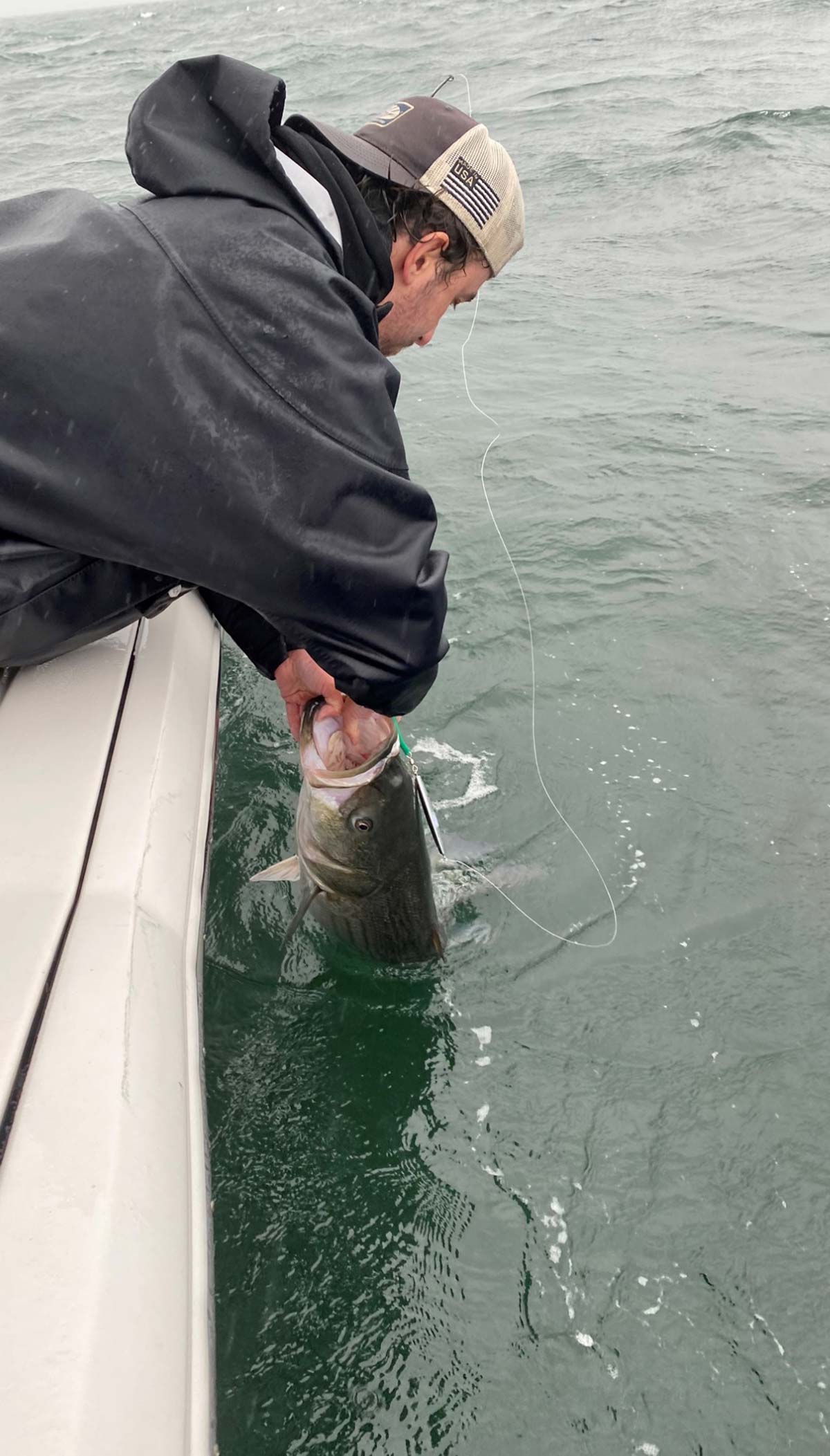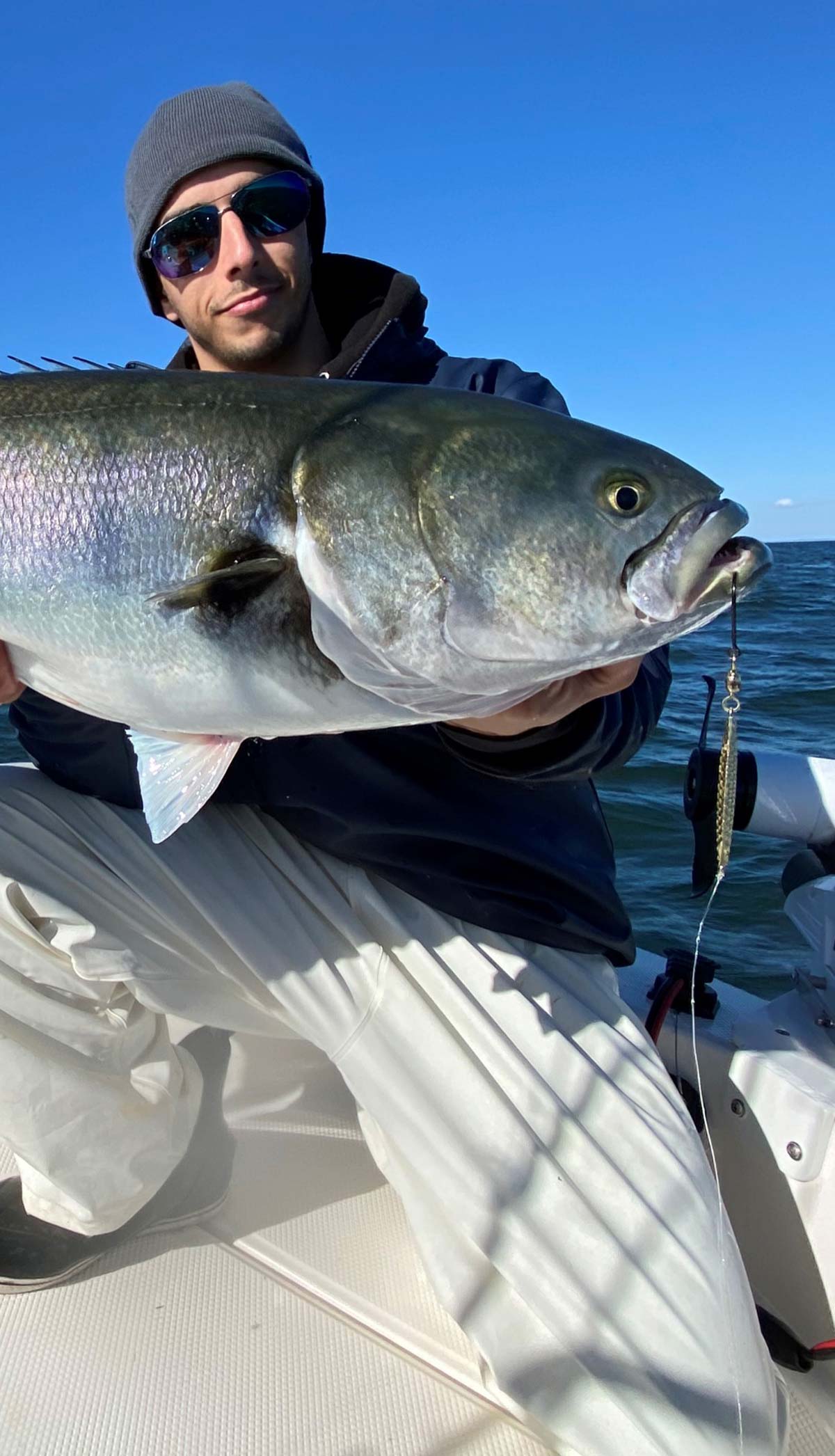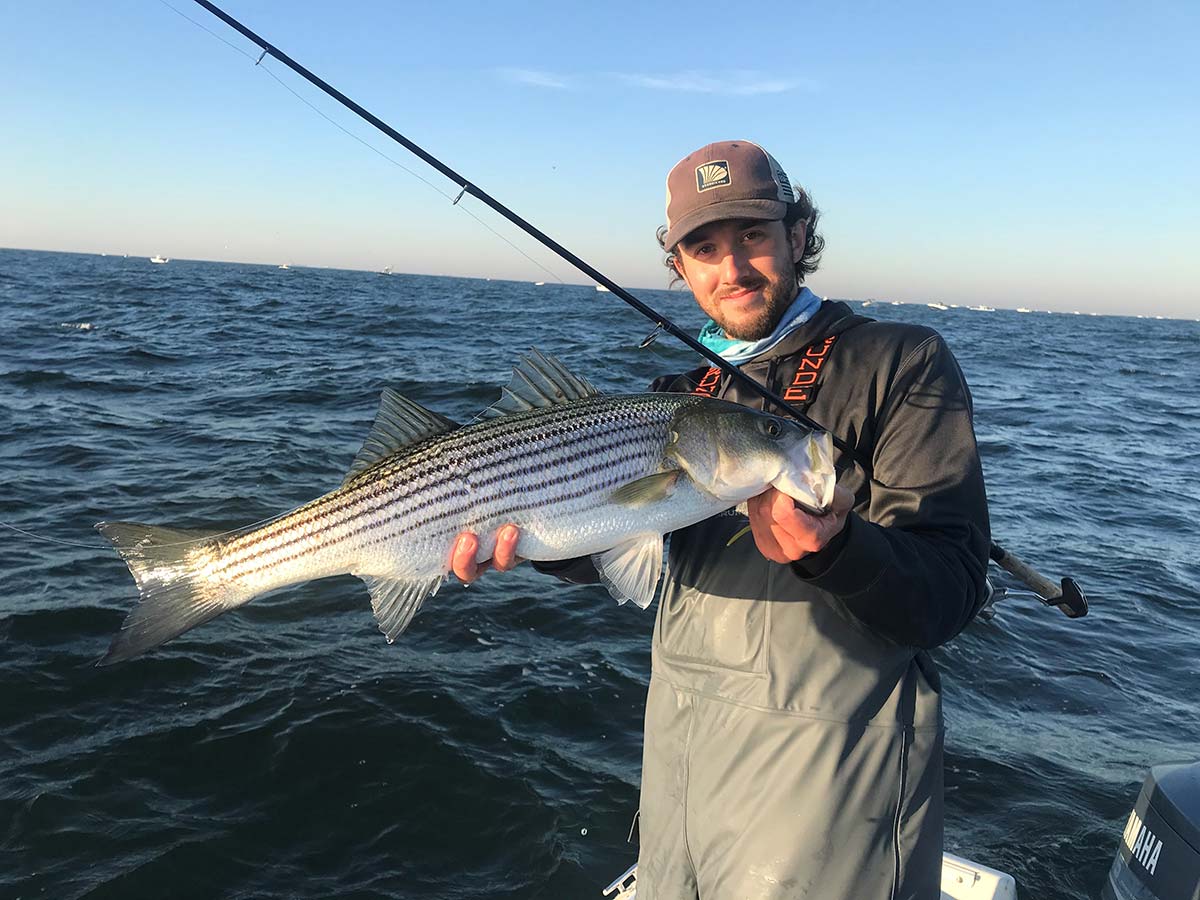
A proven lure and tactic that will result in the last stripers and bluefish of the season for many.
As October turns into November, some might say the prime part of the run has passed, while others are still in the right in the heat of the action, tangling with both large bluefish and stripers. November could be a cold month also, and that might stop some from fishing, but I can definitely tell you, no matter how cold it is, hooking into a drag-screaming fish on a jig will warm you up faster than anything else. Regardless, November will see some very mild days that will also be pleasant to fish. One surefire way to connect with striper or bluefish right until the last of them have made their departure is employing a jig for them either on the South Shore of Long Island.
About The Technique
So, a little about the jig first for those who aren’t familiar with it. A jig is a type of artificial fishing lure that is used to attract and catch fish. Jigs are typically made of a weighted body, often made of lead and a hook. They can be designed in various shapes and sizes, but they are typically compact and are meant to be moved through the water to mimic the motion of prey like menhaden, sand eels, or herring that you might find present in the ocean during the month of November.
Jigs are versatile lures and can be used for a wide variety of species. But they really do excel for stripers and bluefish, and any serious lure fisherman who enjoys catching both species should familiarize themselves with the different styles of them.
Anglers use different jigging techniques to make the lure imitate the behavior of prey. This can include vertical jigging, which involves moving the jig up and down in the water column, or casting and retrieving, where the jig is reeled in with a jerky or erratic motion to entice strikes from fish.
Now, to break it down a little further. A diamond jig is a type of fishing lure or jig used in saltwater fishing, particularly for targeting a variety of species such as striped bass, bluefish, and a few other species, including sea bass. It is named for its shape, which somewhat resembles a diamond or parallelogram. Diamond jigs are typically made of metal and come in various sizes and colors. They are a versatile and popular choice among anglers for several reasons.

A Medley Of Ways
The versatility of the jig makes this one a real winner. You could fish it straight up and down if the fish are feeding below the boat or you’re marking them closer to the bottom. You could also cast the jig a long distance due to its shape and design to reach blitzing schools of fish you might see on top of the water. And if you find yourself fishing from both the boat and surf, the same exact lures could be used in both locations with a lot of success.
It’s possible to work the jig a few different ways and be successful in all of them. One of the popular ones is to drop the jig down to the bottom, engage the reel, take 5 to 10 turns of the handle, stop, and then drop the jig back to the bottom and repeat. This is a really popular method I’ve used on both private and party boat fishing trips. I found that the hits could come at any time — during the retrieve, during the pause, and even on the drop.
Another way to go about jigging is the “yo-yo” style, which is simply letting the jig drop to the bottom, reeling in the slack, lifting the jig off the bottom, and then letting it flutter back down. The majority of my hits using this method come on the drop, so it’s important to follow the jig back to the bottom with the tip of the rod as it transcends a few feet back down.
If you do see a feeding school of fish on top, another key of the jig is its castability. This is a reason why surfcasters consistently use them. Imagine a school of blitzing stripers showing themselves 30 yards away from the boat. With a spinning rod or even a castable conventional, you could easily toss the lure that distance and connect on a fish in a frenzy. I would only recommend using this method on a private boat, though, since the procedure of casting and retrieving a jig requires more space, which could be limited on an open boat.
Different Types Of Diamonds
Most of the jigs come in a silver finish, but some of the jig sharpies like to carry gold with them, too, in case the silver isn’t getting it done. Smooth and hammered versions are both excellent choices for the actual texture of the jig. The advantage of the hammered is that it might offer a different shimmer when retrieved as opposed to a smooth finish, which could catch the eye of a striper of bluefish and tempt them to hit. I’ve also seen versions with reflective tape on them that offer additional physical characteristics that a plain would not.
Another commonly asked question is about the hooks that should be used on a jig. Personally, I’ll never use a treble on one of these jigs and found that a single siwash hook or inline hook will work great and makes unhooking and releasing fish so much easier. Besides, you get back to fishing quicker. You could also use a split ring and barrel swivel with a crimped-on hook to take some of the pressure off the connections. Also, if you find the fishing to be hot and heavy, I recommend crushing or filing down the barb on the jig hook for additional easy unhooking and releasing.
A lot of the jigs sold at local shops come equipped with a colored tube on them, and this is fine too. Greens, whites, and reds are popular fall colors. A bare jig with a plain hook is the standard choice among a lot of the party boat trips and sometimes will outfish the fancy stuff too.

Spinning Or Conventional?
You could go either way for this type of fishing, but what I do recommend and what you will be suggested to do if you fish on an open boat is to go the conventional route. The reason being is that with a conventional reel, it’s easier to control a fish, and with anglers to the left and right of you on one of these boats, it will help cut down on the tangles and result in more fishing time.
I would recommend a reel such as the Penn Squall II Star Drag with a 6 to 1 gear ratio for working that jig quickly. Since you will be fishing open water with nobody around, 30-pound braid is all you would need, along with a 6-foot leader of 50-pound Seaguar Inshore fluorocarbon tied directly with something like a Uni-to-Uni Knot so that you can reel your knot up through the guides. A good rod of choice to pair that reel with would be a St. Croix Rift 7-footer in medium action that is rated from 15 to 40-pound test. Most of the time, I’ll directly tie the leader to the jig with an Improved Clinch Knot.
If you decide to go the spinning route, which I tend to prefer if I’m fishing a private boat, I like using a Saragosa 5000XG with a 30-pound braid and the same 50-pound leader. Another good option is a Slammer IV 6500 in the high-speed version. The 7-foot or 7-foot, 3-inch Rift Spinning in medium pairs well with both of these reels. You could also try a Shimano Trevala medium light 7-footer for some great stopping power results.
Pretty much like clockwork, the jig bite starts sometime in October and runs all the way through the official end of the striper season along the South Shore of the island, with better catches taking place from Fire Island Inlet going west to Breezy by the end of November and into December. Odds are, some of the last bits of solid activity of the year will be a jig bite along this stretch. Before the offseason sets in, get your fill in by using this proven lure.




